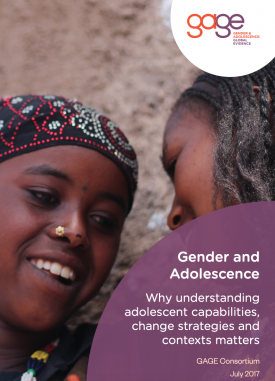Adolescence has powerful impacts on children’s capabilities. This is in part because of the physical transformations wrought by puberty, which are considered second only to those experienced in infancy and early childhood in terms of their scope and speed, and in part because of how children’s place in the family and broader community shifts as they approach maturity. Given these pivotal life changes – and with a global adolescent population of more than 1.2 billion – it is increasingly recognised by development community actors that adolescence represents a very important and unique opportunity to reap a triple dividend for adolescents now, for their adult trajectories and those of their children. Indeed, the years between 10 and 19 are increasingly seen as a critical window during which to accelerate progress against the effects of poverty, inequity and discrimination and to foster positive development trajectories.
Informed by the emerging evidence base on adolescent wellbeing and development, GAGE’s conceptual framework takes a holistic approach that pays careful attention to the interconnectedness of what we call ‘the 3 Cs’: Capabilities, Change strategies and Contexts’ in order to understand what works to support adolescent girls’ development and empowerment – now and in the future. This framing draws on the three components of Pawson and Tilley’s (1997) approach to evaluation, which highlights the importance of outcomes, causal mechanisms and contexts – but we tailor it to the specific challenges of understanding what works in improving adolescent girls’ capabilities.
Suggested citation
GAGE consortium (2019) Gender and adolescence. Why understanding adolescent capabilities, change strategies and contexts matters. Second Edition. London: Gender and Adolescence: Global Evidence. (https://www.gage.odi.org/publication/gage-conceptual-framework-second-edition/)
